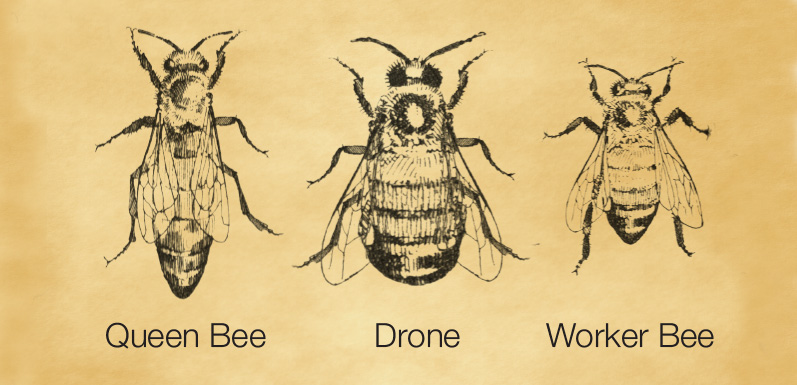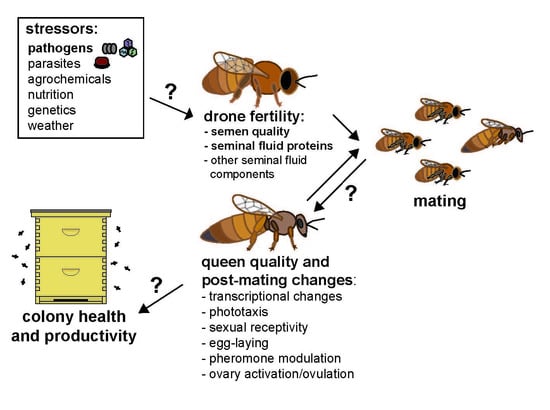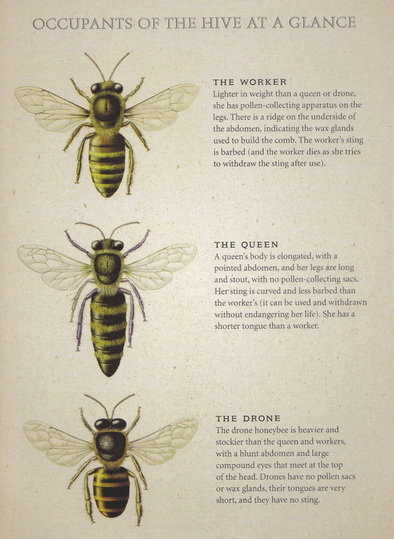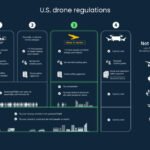Introduction
Brief Overview
Let’s dive into the fascinating world of bees, specifically focusing on the social structure of a hive. Bees are remarkable creatures with intricate roles that contribute to the hive’s success, survival, and the environment at large. When you think of a beehive, what comes to mind? Busy bees buzzing around, sweet honey drizzled on toast, perhaps even the buzzing soundtrack of summer? The hive itself is a marvel of organization and collaboration. In a typical beehive, you’ll find three main castes: the queen bee, drone bees, and worker bees. Each caste plays a critical role in sustaining the colony. The complexity of their interactions and tasks is not just fascinating but vital for understanding the overall health of the ecosystem. For instance, did you know that a single bee can visit up to 2,000 flowers in one day? That’s no small feat! Each visit helps pollinate plants, contributing to flower growth, fruits, and even vegetables that essential wildlife – including humans – depend upon for food. By opening our eyes to the inner workings of a hive, you can understand why bees are sometimes referred to as the glue of our ecosystem.
Importance of Bees in a Hive
The importance of bees in a hive extends far beyond the production of honey. Here’s a closer look at what makes them indispensable:
- Pollination Powerhouses: Bees are responsible for pollinating about one-third of the food we eat. Imagine a world without apples, berries, or almonds! These vital creatures allow a thriving food supply to flourish, showcasing their innate usefulness.
- Biodiversity Advocates: When bees pollinate plants, they help create habitats for various wildlife. This enhances biodiversity in ecosystems. Healthy bee populations support the growth of numerous plant species, which in turn provide food and shelter for diverse creatures.
- Essential for Agriculture: Many crops depend on bees for pollination. Farmers often rely on them to boost their yields. Some studies suggest that beekeeping can increase crop production anywhere from 30% to 100%. When you think about the food on your plate, a significant amount may be courtesy of our buzzing friends.
- Honey Production: Of course, let’s not forget honey! This sweet delight doesn’t just taste good; it also has health benefits. Honey has anti-inflammatory properties and can soothe sore throats. Moreover, honeybees produce beeswax, which has applications in cosmetics, polishes, and even candles.
- Role Models for Efficiency: Bees operate with a high level of efficiency, working together in a system that ensures the survival of the hive. They demonstrate the power of teamwork, which can serve as a relatable lesson even in our lives.
When you consider these factors, it becomes clear that bees are not just pollinators; they serve as vital organisms that help maintain the planet’s ecological balance. Their role impacts the food supply chain as a whole, emphasizing their importance for future generations. Here’s a fun thought: next time you savor a piece of fruit or drizzle honey in your tea, take a moment to appreciate the bees who made it possible. Your support for local honey producers or seeing bees in gardens can make a tangible difference in their populations. In summary, bees, while sometimes overlooked, hold immense ecological significance. The structure of the hive, with its organized roles and responsibilities, reflects a complex but functional society. Understanding their place in our world allows us to advocate for their conservation, ensuring these tireless pollinators continue their crucial work for years to come. So, the next time you see a bee buzzing nearby, remember the intricate web of life they support—and take a moment to express your gratitude for their contributions! 🐝✨

Drone Bee
Characteristics and Physical Traits
Let’s shift our focus to one specific player in the hive: the drone bee. Drones are the male bees, and while they may not be as well-known as their worker counterparts, they play crucial roles in the hive dynamics. Understanding their physical traits offers insight into how they function within this remarkable social structure. Drones are quite distinct from both worker bees and queen bees in several ways:
- Appearance: Drones are typically larger and bulkier than worker bees. They have a more rounded body and lack the stinger that workers possess. This absence of a stinger makes drones seem less equipped for protection, but we’ll see how they defend their hives in other ways.
- Wings: Drones have larger wings relative to their body size, which allows them to fly efficiently. Their wing structures facilitate quick take-offs, essential for their primary task of mating.
- Eyes: If you take a close look, you’ll notice that drones have exceptionally large eyes. These are crucial for spotting potential mates during their mating flights. The visual prowess aids them in identifying queens in the air.
- Color and Size: Drones usually have a more robust, hairier appearance than worker bees, often exhibiting a dark coloration. This helps distinguish them at a glance.
Drones do not participate in foraging, hive maintenance, or nursing duties, which gives them a different lifestyle compared to workers. Instead, their existence revolves around a singular mission: the continuation of the hive’s genetics through mating.
Role Within the Hive
Now that you have a clearer picture of what drone bees look like, let’s delve into their role within the hive. While drones may not partake in the day-to-day chores of colony life, their unique contributions are essential for the hive’s survival and reproduction.
- Mating: The primary role of a drone is to mate with a queen. This mating occurs during a brief period when the queen is flying in search of mates—a mating flight, if you will. Drones leave the hive to join in this aerial congregation, often at specific locations known as drone congregation areas (DCAs). Here, they must compete with other drones to gain the attention of the queen.
- Genetic Diversity: By mating with multiple queens throughout the season, drones help ensure genetic diversity within the hive. This genetic variation is vital for resilience against diseases and environmental challenges. A healthy mix of genes contributes to the hive’s adaptability over time.
- Limited Contributions: Drones are not entirely useless in the hive, despite popular misconceptions. On cooler days or when food supplies are high, they can help maintain hive temperature by clustering together. This collective body heat ensures the survival of the colony and aids in managing the bees’ comfort.
- Exit Strategy: There is a more somber aspect to a drone’s life. At the end of the mating season, drones often face eviction from the hive. Without stingers or work duties, they become a drain on resources. The worker bees may push them out, leading to a solitary end.
You might be thinking, “What about their emotional lives?” While bees operate largely on instinct and chemical signals rather than emotions per se, it’s intriguing to think about their life cycles purely revolving around reproduction. It paints a complex picture of the hive’s survival strategy. In summary, drone bees are more than just the male members of the hive; they serve a vital reproductive purpose while contributing to the genetic health of the colony. Through their mating endeavors, these bees have a significant impact on future generations, ensuring that the hive remains strong and resilient. Understanding their unique characteristics and roles deepens our appreciation for the hive’s social structure. 🐝🌼

Worker Bee
Characteristics and Physical Traits
Continuing our exploration of the hive, let’s shine a spotlight on the worker bees—the true unsung heroes of the colony. When you think of a beehive buzzing with activity, it’s usually these tenacious little workers that come to mind. Their characteristics and physical traits set them apart as the backbone of the community. Worker bees are fascinating in their design:
- Size and Structure: Typically, worker bees are smaller than both drones and queen bees. This compact size allows them to navigate through the intricate passages of the hive easily. Their bodies are designed for efficiency and multitasking.
- Stingers: One of the most notable traits of worker bees is, of course, their stingers. Unlike drones, worker bees have barbed stingers that they can use for defense. This makes them protectors of the hive, maintaining safety for the entire colony. However, the sacrifice is significant; when a worker bees’ stinger is used, it often results in the bee’s death— a testament to their commitment to hive protection.
- Pollen and Nectar Basket: The hind legs of worker bees feature specially adapted structures called corbicula, or “pollen baskets.” These allow them to efficiently gather and transport pollen back to the hive, aiding in the pollination process and the food supply for the colony.
- Glands: Worker bees also possess various glands that produce wax, honey, and royal jelly. The ability to secrete wax is particularly unique, allowing them to construct those beautiful hexagonal honeycomb structures that store honey and accommodate larvae.
When you consider the physical traits of worker bees, it becomes clear how their design is intricately tailored to support the hive’s functionality.
Role Within the Hive
Now, let’s unpack the many hats that worker bees wear within the hive. These bees are not just foragers; they’re the heartbeat of the colony, responsible for a multitude of tasks necessary for survival.
- Foraging and Gathering: One of the primary roles of worker bees is foraging for nectar and pollen. On sunny days, you’ll often see them flitting from flower to flower. They collect nectar, which is turned into honey, and pollen, which serves as protein for developing larvae. A fun fact: A single worker bee can visit over 2,000 flowers in one day—an impressive feat!
- Nursing Duties: Within the hive, young worker bees take on the role of caretakers for the brood (eggs and larvae). They feed the larvae with royal jelly and honey, ensuring that the next generation grows healthy and strong. It’s heartwarming to think that these little workers are nurturing the future of the hive.
- Hive Maintenance: Worker bees are responsible for cleaning and maintaining the hive. This includes tasks like removing debris, repairing damaged combs, and even regulating the temperature. They follow the “cleanliness is next to godliness” mantra, creating a safe environment for the hive.
- Defense: As mentioned earlier, worker bees play a critical role in protecting the hive from intruders. Their stings are a last line of defense when it comes to safeguarding the queen and the brood. They will fiercely defend against threats, showcasing their loyalty to the colony.
- Communication: Worker bees also excel at communication. They use a complex system of pheromones and the famous “waggle dance” to relay information about food sources to other members of the hive. This intricate dance not only informs others about the location of nectar but also conveys relevant details such as distance and direction.
Being a worker bee is a demanding job. They typically live for a few weeks to a few months, depending on the season, and put forth a tremendous effort to ensure that the hive thrives. The dedication and teamwork displayed by worker bees create a vibrant and functional society that benefits countless ecosystems. In conclusion, worker bees are the embodiment of hard work and collaboration within the hive. Their roles are vital to the overall health and productivity of their colony. By understanding the characteristics and responsibilities of worker bees, we gain valuable insight into the compelling social structure of beehives, and a deeper appreciation for these incredible creatures. 🐝🌺

Reproduction in the Hive
Drone Bee’s Reproductive Role
Now that we’ve established the various roles within the hive, let’s turn our attention to reproduction—the essence of colony survival and continuation. This process is primarily driven by the actions of drone bees and worker bees, each contributing in their own unique ways. The drone bee’s role in reproduction is both crucial and quite fascinating. As the male bees, drones have one primary purpose: to mate with the queen during her nuptial flights. Here’s how it unfolds:
- Mating Flights: When a queen is ready to mate, she leaves the hive for a special mating flight. This event draws drones from various hives to a designated area where they compete for her attention. It’s quite the spectacle! Imagine numerous drones swooping and soaring through the air, all eager to ensure the continuation of their genetics.
- Mating Process: When a drone successfully mates with a queen, the process can be intense. The mating takes place in mid-air, and during the act, the drone loses his reproductive organs, which effectively seals his fate. Consequently, he will die shortly afterward—a true sacrifice for the hive.
- Genetic Contribution: This mating ensures that the queen can store the drone’s sperm in her spermatheca, allowing her to fertilize eggs for several years into the future. This stored sperm is pivotal in generating a diverse population, vital for the hive’s resilience against disease and changing environmental conditions.
- Seasonality: In a single mating season, a queen may mate with several drones (often as many as 15), increasing the genetic diversity within the hive. This not only provides robustness to the swarm but also helps adapt to shifts in the environment.
Drones serve a singular purpose in the grand scheme of the hive. While their lives may be short-lived, their role in ensuring genetic diversity is a powerful testament to the complexities of hive dynamics.
Worker Bee’s Reproductive Role
Contrasting with drones, worker bees have an indirectly supporting role in reproduction. Although worker bees are sterile and do not mate or produce young directly, they play essential roles to uphold and nurture the reproductive capacity of the hive.
- Queen Care: Worker bees are responsible for feeding and grooming the queen. In the hive, the queen is the one who lays the eggs. The health and productivity of the queen are crucial for the entire colony. If the queen is well-cared for, she can lay thousands of eggs per day during the peak season, ensuring the growth of the hive.
- Egg Feeding: Upon laying eggs, worker bees feed the developing larvae with royal jelly, a nutritious substance that shapes their future roles. Depending on how much royal jelly each larva receives, it will develop into a worker bee, drone, or even a new queen, illustrating an incredible expression of hive decision-making.
- Queen Replacement: If the queen becomes weak or starts to slow down her egg-laying, worker bees can sense this through pheromones. They will then initiate the process of creating a new queen by selecting a few larvae and feeding them an exclusively royal jelly diet. This foresight guarantees continuity for the colony, even in times of distress.
- Emergency Reproduction: In circumstances where the queen is lost, some worker bees can lay unfertilized eggs. These eggs develop into drones. However, this is not the preferred method of reproduction, as worker-laid eggs do not offer the genetic diversity that comes from a queen’s mating flights.
In summary, while drone bees may be the face of reproduction with their singular mating mission, worker bees provide the necessary support to nurture the next generation. Together, they uphold the reproductive essence of the hive, ensuring its continuity and growth. Recognizing the collaborative nature of hive reproduction deepens our appreciation for these extraordinary insects and their commitment to survival. 🐝👑

Lifespan and Efficiency
Drone Bee’s Lifespan
Let’s take a closer look at the fascinating yet brief lives of drone bees. As we delve into their lifespan, it’s essential to appreciate the efficiency with which they fulfill their roles within the hive.
- Short But Sweet: The average lifespan of a drone bee can range from a few weeks to a couple of months, depending largely on the season and the needs of the hive. They are born during the spring and summer months—timed perfectly for mating opportunities. After their brief period of life, many drones will meet an unfortunate end due to environmental factors or the whims of their fellow hive members.
- Mating Season: The peak activity for drones occurs during their mating flights, which typically take place during warm afternoons. Once their reproductive mission is accomplished, most drones are either defeated in the mating competition or are cast out of the hive. With no ability to forage or work, these drones become a burden to the workers.
- The Aftermath: After engaging in mating, a drone’s life comes to a swift conclusion. Their fate is sealed as they lose their reproductive organs and die shortly after mating. It’s a cycle that highlights both the beauty and harshness of nature—while they fulfill their role to help ensure the hive’s future, their sacrifice is a poignant reminder of how life can be so fleeting.
Despite their short lifespan, drone bees are remarkably efficient in their reproductive role. A single mating session can empower a queen to lay thousands of eggs, underscoring the turning point their lives represent in the life cycle of the hive.
Worker Bee’s Lifespan
Now, let’s contrast the drone bees with worker bees, who generally face a much busier and longer life in service to the hive. Their lifespan is notably different from that of their male counterparts:
- A Longer Life: Worker bees typically live for about 6 to 8 weeks during the height of summer when their duties are intense. However, if born in the fall and gearing up for winter, worker bees can extend their lifespan to several months. They develop more slowly and prepare for the cold months, allowing them to survive longer due to the decreased activity within the hive.
- Duty and Service: Workers are constantly engaged in a range of tasks—ranging from foraging for nectar and pollen to nursing larvae and defending the hive. The intense workload during summer can wear them down quickly. They fly thousands of miles each day in search of resources, showcasing their extreme efficiency.
- Life Cycle: In a typical hive, worker bees are born with specific roles that shift as they age. Younger bees tend to focus on hive maintenance and brood care, while older worker bees transition to foraging. This adaptability further enhances the hive’s operational efficiency and ultimately influences their lifespan.
- Surviving Winter: In contrast to the summer bees, those born in late summer or early fall have a crucial role: they prepare for winter. By consuming extra honey and gathering essential resources, these worker bees ensure the colony’s survival through the cold months. They become more robust and provide a vital lifeline for those bees that will emerge in the spring.
- A Testament to Teamwork: Worker bees truly embody the concept of teamwork, all the while balancing their lives between individual roles and collective goals. It’s awe-inspiring to consider that each bee contributes to a larger purpose, often making personal sacrifices for the hive’s well-being.
In summary, the lifespans of drone and worker bees differ significantly due to their distinct roles within the hive. While drone bees enjoy a short life concentrated on mating, worker bees engage in a multitude of responsibilities, extending their lives to ensure survival in the hive. This division of labor not only underscores their specific contributions but also exemplifies the interconnectedness of their existence, allowing us to appreciate the inherent efficiency and organization found within a beehive. 🐝🌿

Behavior and Communication
Drone Bee Behavior
As we dive into the behavioral patterns of drone bees, it’s essential to recognize their fascinating yet singular focus within the hive. Unlike their hardworking female counterparts, drones have distinct behaviors that ultimately revolve around a specific mission: mating.
- Mating Competitions: When the queen is in her mating phase, drones engage in what can be described as high-stakes competitions. They congregate in drone congregation areas (DCAs) where they showcase their flying skills and speed, all in hopes of catching the eye of a fertile queen. It’s almost like an airborne pageant! Each drone must demonstrate agility and endurance to outmaneuver the competition.
- Leisurely Lifestyle: Outside of mating season, drones are known for their seemingly relaxed lifestyle. They spend their days buzzing around the hive and nearby flowers, often absorbing the ambiance more than performing laborious tasks like their worker sisters. It’s a lifestyle that can be seen as a double-edged sword; while they may appear carefree, their lack of contribution to hive maintenance often leads to their eventual eviction when resources become scarce.
- Flight Patterns: Drones can often be seen performing a series of aerial maneuvers, which serves both a functional purpose and a playful side. These flight patterns may look random, but they’re crucial for engaging with a queen during her search for mates. Interestingly, only a small percentage of drones successfully mate, which emphasizes the competitive nature of their existence.
- Social Interactions: Drones tend to maintain camaraderie with one another, often found in close proximity as they experience hive life together. This bond becomes significant during mating since they may rely on each other’s strength in competition.
In essence, drone behavior is driven by instinct rather than social interactions. The mating season acts as a catalyst that propels their actions, directing them toward a singular goal: to perpetuate the colony’s lineage.
Worker Bee Behavior
Now that we’ve explored the leisurely life of the drones, let’s shift gears and delve into the industrious world of worker bees. The behavior of these remarkable insects is multifaceted and driven by a shared goal of maintaining and thriving in their hive.
- Task Specialization: One of the most interesting aspects of worker bee behavior is task specialization. As bees age, they transition from roles like cleaning and tending to the queen and larvae to foraging for food. For example, younger worker bees usually focus on nursing duties while older ones shift to foraging. This dynamic structure maximizes efficiency within the hive.
- Communication: Worker bees are masters of communication! They utilize a complex system of pheromones and dances—most famously, the “waggle dance.” This unique behavior conveys information about the distance and direction of food sources to their hive mates. Imagine the excitement when a worker bee returns from a successful foraging trip and begins to perform the waggle dance, spinning and wiggling in a specific pattern to relay crucial information.
- Social Structure: Worker bees display impressive cooperation within the hive. They work systematically to maintain hive health through cleaning, building comb, and feeding larvae. This communal effort fosters a strong sense of social cohesion, as seen in how they galvanize together to protect the queen. It’s not uncommon to witness a group of workers unite to fend off intruders or threats.
- Resource Management: One of the vital behaviors observed in worker bees is resource management. They meticulously allocate food supplies among themselves and the queen, ensuring that there’s enough for the entire colony. This conscientious observation of resource availability showcases their remarkable ability to adapt to changes in the surroundings.
- Conflict and Resolution: Just like any community, conflicts can occur within the hive. However, workers often resolve disputes through pheromone communication or even performing “tactile interactions,” where they touch one another with their antennae to diffuse tensions. This collaborative spirit demonstrates their commitment to harmony within the hive.
In summary, worker bee behavior is a sophisticated symphony of roles and responsibilities that coexist harmoniously. Their communication, dedication to tasks, and cooperative nature serve as the lifeblood of the colony. When you consider the intricate interactions that happen within a beehive, it’s hard not to be amazed by the intelligence and efficiency these small creatures display. 🐝❤️

Contribution to the Hive
Drone Bee Contribution
Continuing our exploration of the hive dynamics, it’s time to consider the specific contributions of drone bees. Although their roles may appear limited at first glance, their contributions are vital in maintaining the genetic vitality of the colony.
- Mating and Genetic Diversity: The primary contribution of drone bees lies in their role during the mating process. They ensure genetic diversity within the hive, which is crucial for the colony’s resilience against diseases and environmental challenges. A genetically diverse hive is better equipped to adapt to its surroundings, ensuring stability and continuity.
- Queens’ Choice: During the mating ritual, when a queen is flying, she may mate with several drones. This selection process allows her to choose the drones with the most favorable genetics. As a result, the genes passed on to future generations help create a stronger and healthier population of bees.
- Pollination: While drones have limited foraging responsibilities compared to workers, they can contribute to pollination simply by flying around and interacting with flowers. This might not be their primary function, but every little bit helps when it comes to the overall pollination efforts of a hive.
- Energy Source for the Colony: Drones are somewhat passive members of the hive, drawing energy from the resources that workers gather. In times of plenty, they help the hive utilize these resources more efficiently, acting as energy reservoirs until they are needed for reproduction.
While drone bees may contribute less overall in terms of workload compared to their dedicated sisters, their role in the reproductive machinery of the hive is irreplaceable. Their contributions may be short lived, but the impact resonates throughout the colony for generations.
Worker Bee Contribution
Now let’s turn our focus to the true workhorses of the hive: the worker bees. Their contributions permeate every facet of hive life and are essential for colony survival and growth.
- Foraging for Resources: Worker bees are primarily responsible for foraging nectar and pollen. Their tireless efforts to gather these resources serve as the foundation of the hive’s food supply. In fact, a single worker bee may collect enough nectar to produce approximately 1/12th of a teaspoon of honey during her lifetime. Multiply that by thousands of bees, and you can see how their collective efforts yield a substantial harvest!
- Nurturing the Young: Worker bees take on the important role of caring for the brood. By feeding and protecting the larva, they ensure that future generations will thrive. This maternal aspect of their behavior showcases their commitment to the colony’s longevity, as nurturing the young is vital for sustaining hive populations.
- Hive Maintenance and Construction: Worker bees contribute to hive maintenance by cleaning and repairing the structures. They also build the honeycomb using wax produced from their own bodies, crafting the intricate hexagonal shapes that store honey and serve as brood chambers. This construction showcases their architectural skills and ability to create an organized living space.
- Defense and Protection: Worker bees play a front-line role in defending the hive from predators and intruders. When they sense danger, they are quick to respond, sacrificing themselves if necessary for the protection of the queen and the hive. Their bravery and commitment are commendable, reflecting the true essence of community spirit.
- Communication and Coordination: Worker bees navigate complex communication systems to inform others of food sources, potential dangers, and even the well-being of the queen. Their ability to relay this information has a direct impact on the efficiency of the hive, ensuring that bees are always working together in harmony.
In conclusion, the contributions of worker bees are multifaceted and essential for the health and vitality of the hive. From foraging to nurturing and protection, their ceaseless efforts create a thriving community. While drones are critical for reproduction, the versatility and dedication of worker bees truly drive the success of the colony. The interplay of these roles creates a masterpiece of cooperation, reflecting the incredible potential of nature’s social structures. 🐝🌼



